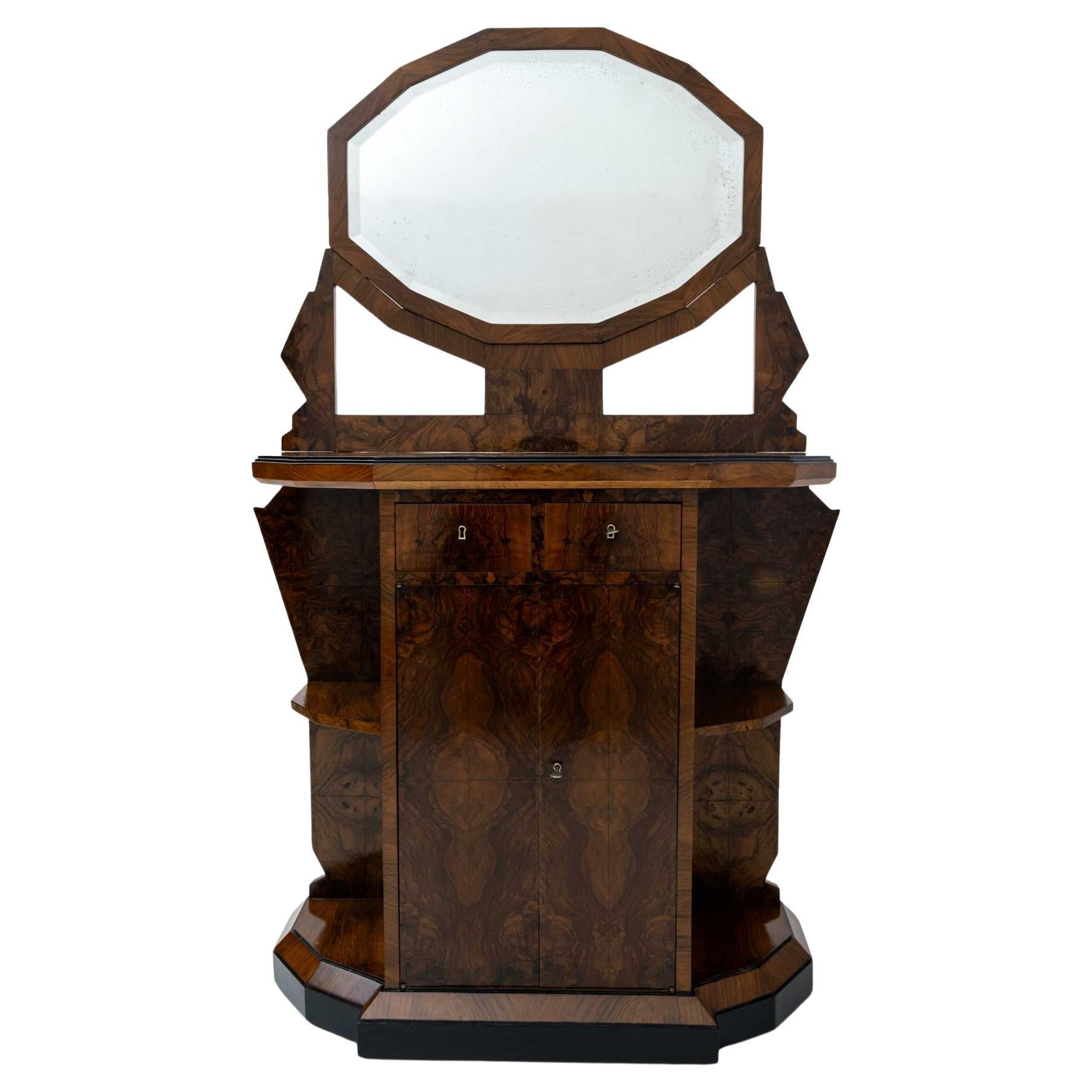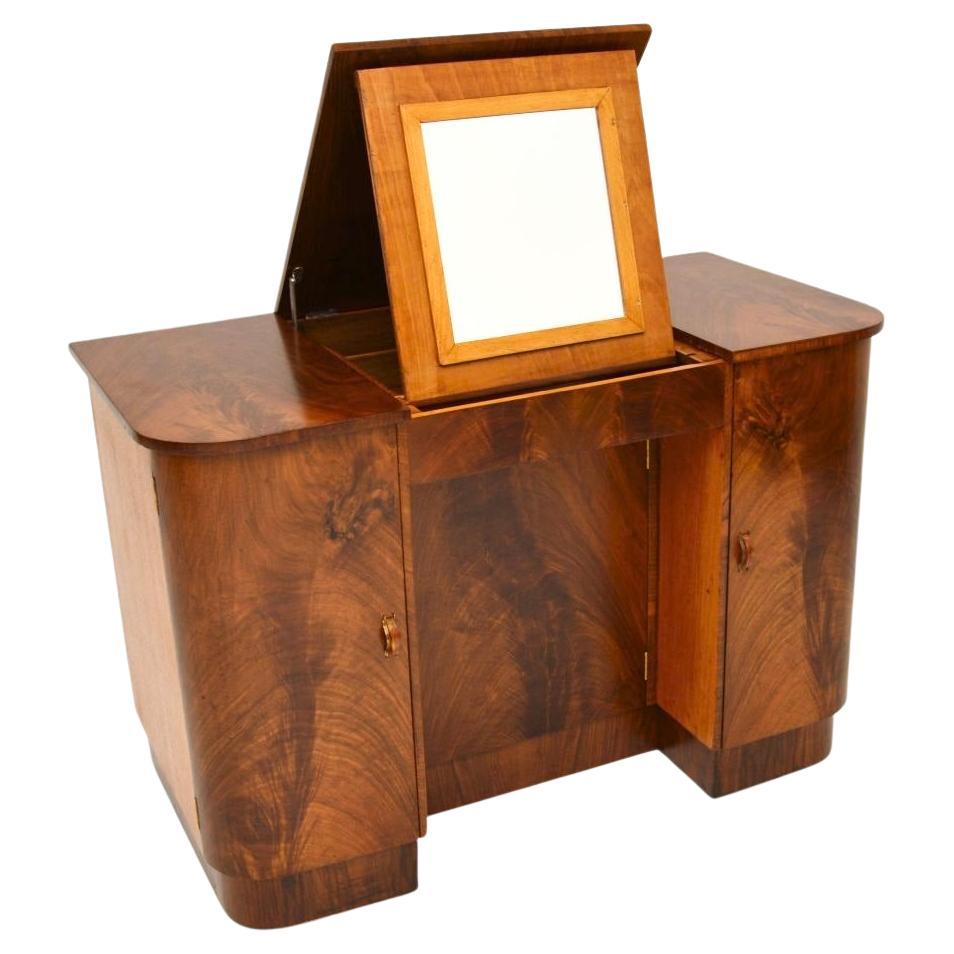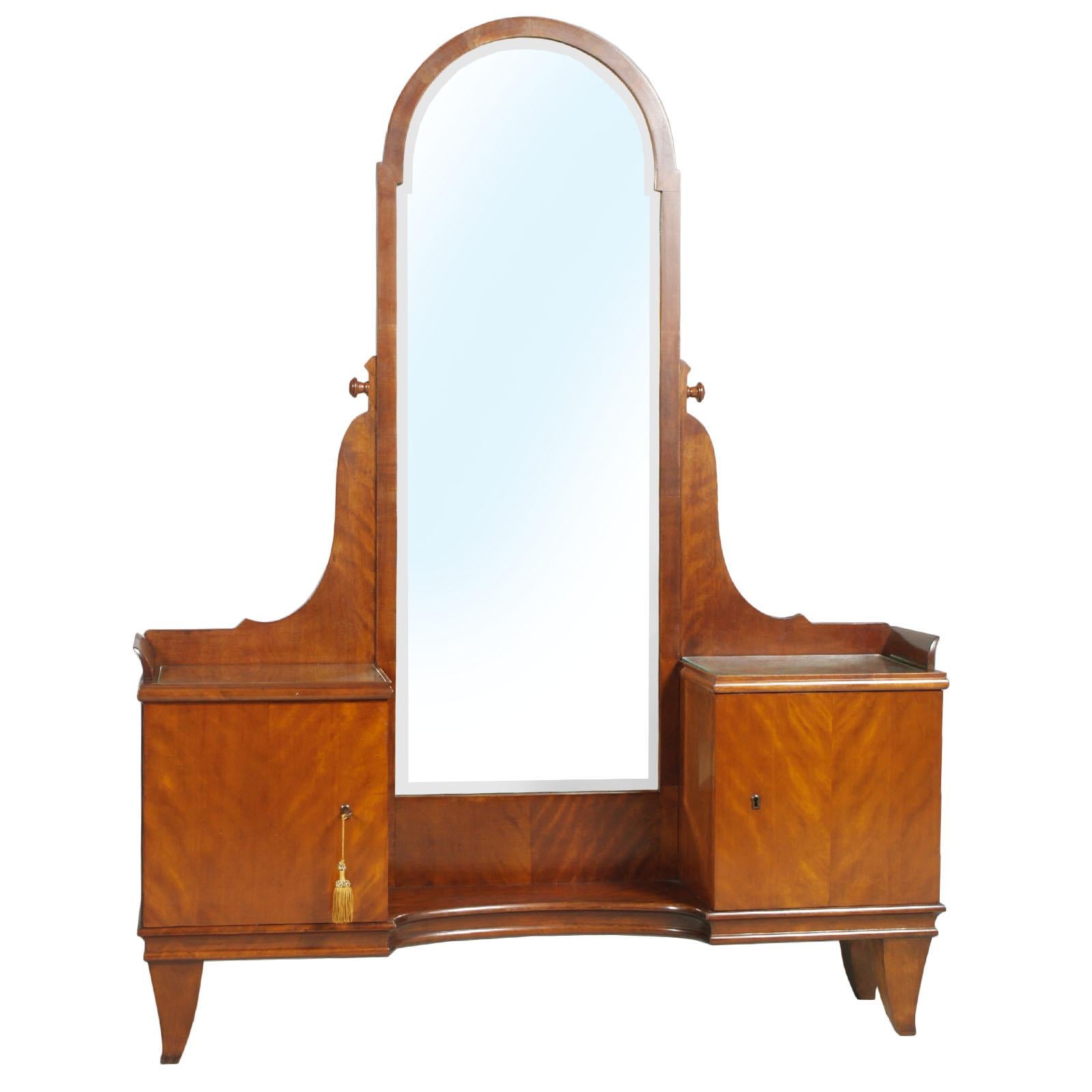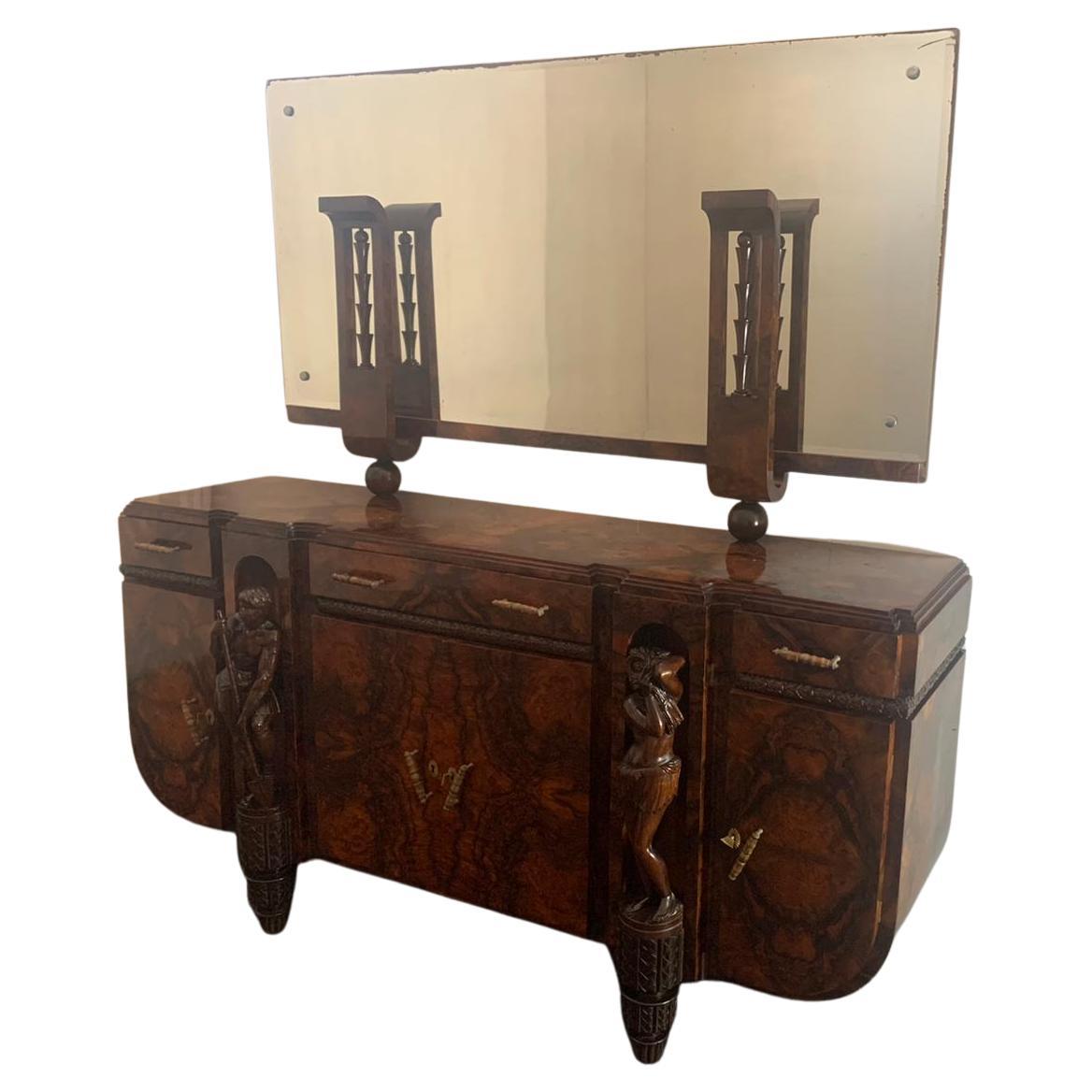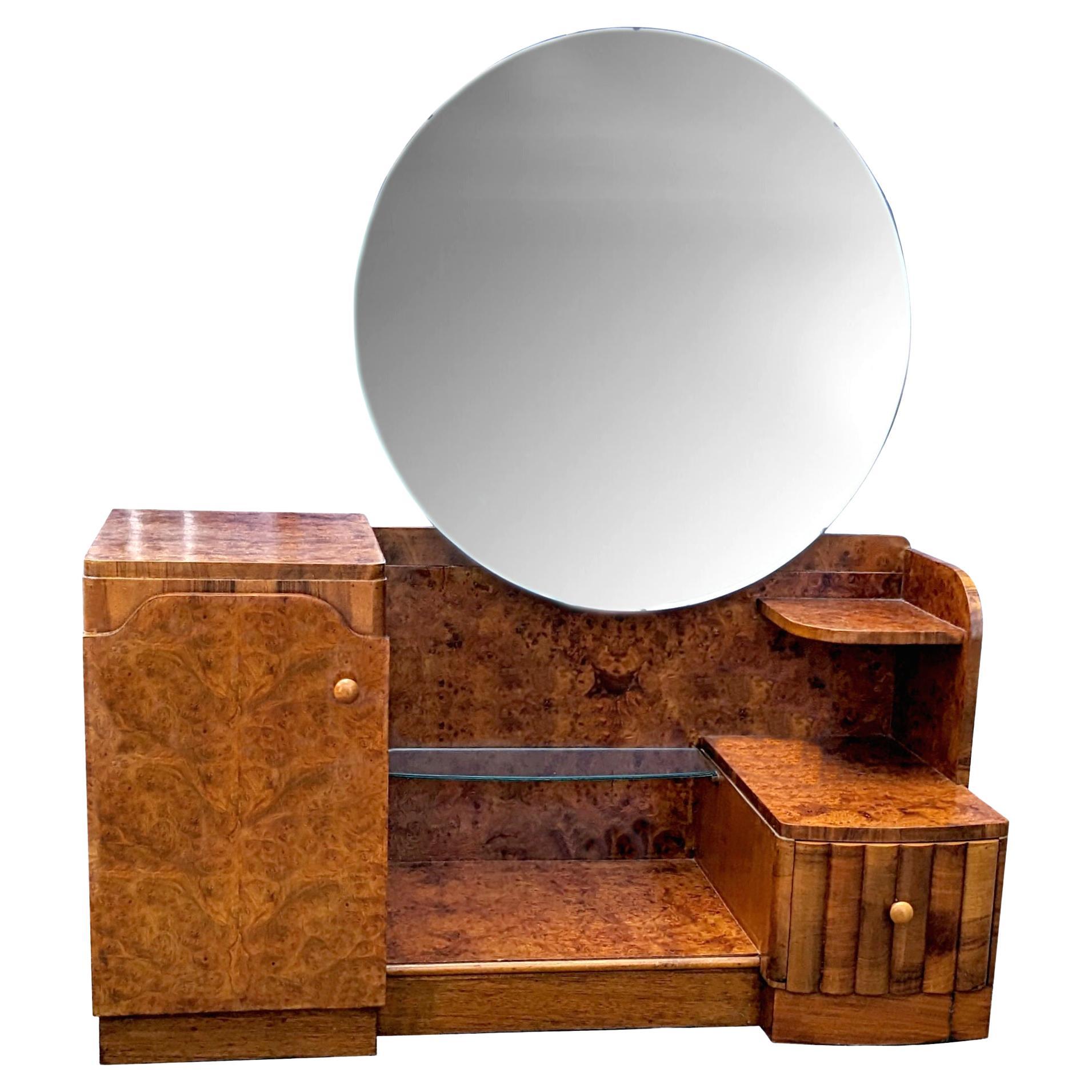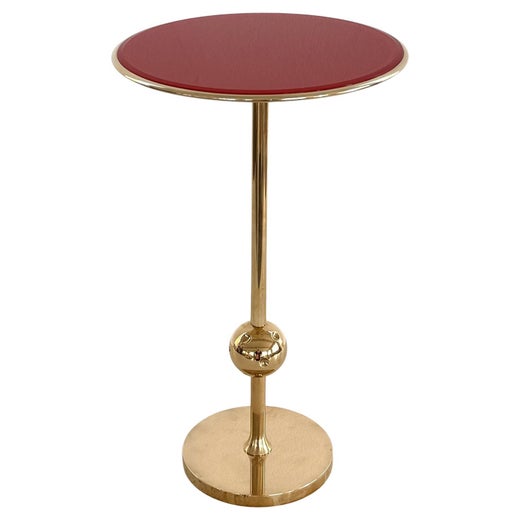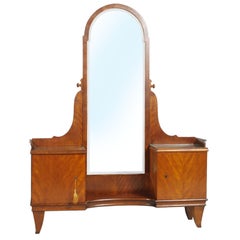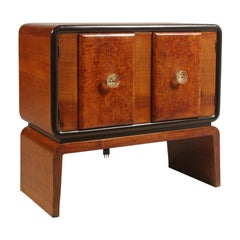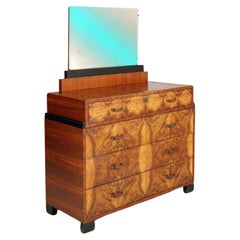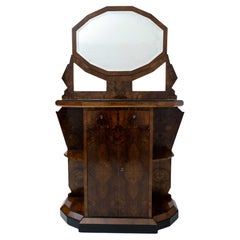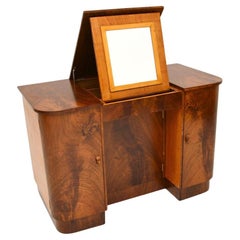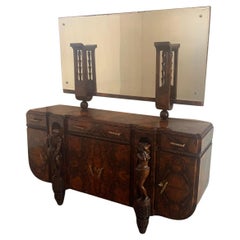Art Deco Vanity , Sculptural Entrance Cabinet, by Osvaldo Borsani , Burl Walnut
About the Item
- Creator:Osvaldo Borsani (Cabinetmaker)
- Dimensions:Height: 76.38 in (194 cm)Width: 49.22 in (125 cm)Depth: 20.87 in (53 cm)
- Style:Art Deco (Of the Period)
- Materials and Techniques:
- Place of Origin:
- Period:
- Date of Manufacture:1930s
- Condition:Wear consistent with age and use.
- Seller Location:Vigonza, IT
- Reference Number:Seller: FW251stDibs: LU2495312778702
Osvaldo Borsani
With his stylish and technically innovative furniture, Osvaldo Borsani helped change the face of Italian design in the 1950s and ’60s. His sofas and chairs, featuring deeply upholstered seating and adjustable position settings, have an aura of optimism and efficiency that still seems fresh and lively today.
Born in the commune of Varedo in northern Italy’s Lombardy region, Borsani studied at the Brera Academy in Milan — the same school attended by such luminaries as designer Piero Fornasetti and artist Lucio Fontana — as well as the Polytechnic University of Milan. Borsani first worked for his father’s furniture-making firm, Arredamenti Borsani, an atelier influenced by the more expressive and curvaceous wing of Art Deco design.
By 1953, when, along with his twin brother, Fulgenzio — the pair also created this visionary mid-century villa — Borsani opened the furniture company Tecno, his design sensibilities had evolved toward furnishings with strong, simple forms enhanced by mechanical innovations, as with the P40 adjustable armchair. Borsani would be the firm’s lead designer for 30 years, while fostering work by Vico Magistretti, Carlo De Carli, Robin Day and others.
Similar to Gio Ponti in the earliest years of his career, Borsani first created designs marked by lush and buoyant lines: tables with voluptuous curved legs, sofas with undulating backrests.
But Borsani’s best-known and most novel pieces date from Tecno’s initial furniture lines: the adjustable D70 sofa, which folds open to make a daybed, and the P40 recliner. The latter — now included in the collections of the Museum of Modern Art and the Victoria & Albert Museum — is an articulated lounger with a back, seat and leg rest that can be moved into 486 different positions. Not only is it extremely comfortable, it is also enduringly chic.
Find a collection of vintage Osvaldo Borsani tables, dining chairs and other furniture on 1stDibs.
- ShippingRetrieving quote...Shipping from: Vigonza, Italy
- Return Policy
More From This Seller
View AllEarly 20th Century Italian Art Deco Vanities
Glass, Mirror, Walnut
Vintage 1920s Italian Art Deco Commodes and Chests of Drawers
Mirror, Walnut, Burl
Mid-20th Century Italian Art Deco Dry Bars
Mirror, Burl, Walnut
Vintage 1920s Italian Art Deco Bedroom Sets
Walnut
Vintage 1930s Italian Art Deco Night Stands
Walnut, Burl
Vintage 1920s Italian Baroque Revival Vanities
Mirror, Walnut, Burl
You May Also Like
Antique Early 1900s Italian Art Deco Sideboards
Mirror, Walnut
Vintage 1930s British Art Deco Vanities
Mirror, Walnut
Vintage 1920s Italian Art Deco Sideboards
Mirror, Walnut, Burl
Vintage 1930s Italian Art Deco Cupboards
Brass
Mid-20th Century English Art Deco Bedroom Sets
Mirror, Walnut
Early 20th Century French Art Deco Vanities
Marble
